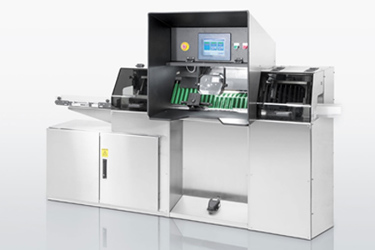Overcoming Hurdles In Automated Visual Inspection Of Lyophilized Vials

Table of Contents
Challenges in Image Acquisition for Automated Visual Inspection of Lyophilized Vials
Automated visual inspection systems for lyophilized vials must overcome significant challenges related to image acquisition. The inherent characteristics of lyophilized products and the vial packaging itself introduce complexities that can affect the accuracy and reliability of the inspection process. These challenges include lighting and shadow effects, surface reflections, and variations in vial filling and lyophilization.
Lighting and Shadow Effects
Inconsistent lighting is a major source of error in automated visual inspection. Shadows cast by the vial or the lyophilized cake can obscure defects, leading to false negatives. This problem is exacerbated by the three-dimensional nature of the lyophilized cake.
- Solutions:
- Employing diffused lighting techniques minimizes harsh shadows. This can involve using specialized light sources and diffusers to create even illumination across the vial's surface.
- Advanced algorithms capable of shadow compensation can analyze the image and digitally remove or reduce the impact of shadows. These algorithms often rely on sophisticated image processing techniques.
- Multi-angle lighting setups provide multiple perspectives of the vial, reducing the likelihood that shadows will completely obscure a defect. This approach requires careful calibration and alignment of multiple light sources.
Surface Reflections
Glare and reflections from the vial's glass surface are another significant obstacle. These reflections can mask underlying defects, leading to missed quality issues and potential product recalls.
- Solutions:
- Optimizing vial surface treatments to minimize reflections is a proactive measure. This may involve using specialized glass treatments or coatings to reduce surface reflectivity.
- Polarization filters can effectively reduce glare by selectively filtering out reflected light. This technique is particularly useful in reducing reflections from curved surfaces.
- Sophisticated image processing algorithms can be used to identify and remove reflections from the acquired images. These algorithms typically rely on pattern recognition and image segmentation techniques.
Variations in Vial Filling and Lyophilization
Inconsistencies in the lyophilization process can create variations in the appearance of the lyophilized cake. These variations, such as differences in cake height, density, or surface texture, can make defect detection challenging.
- Mitigation Strategies:
- Implementing stricter controls during the lyophilization process is paramount to reduce variations. This involves careful monitoring of process parameters such as temperature, pressure, and vacuum levels.
- Robust image analysis algorithms must be capable of accounting for these variations in cake appearance. This might involve using adaptive thresholding or other methods to adjust the detection criteria based on the specific characteristics of each vial.
- Machine learning models trained on diverse datasets can learn to recognize defects even in the presence of significant variations in cake appearance. This approach offers greater flexibility and adaptability than traditional image processing techniques.
Advanced Image Processing and Defect Detection Algorithms for Automated Visual Inspection
The selection and optimization of image processing and defect detection algorithms are critical for the success of automated visual inspection systems. The choice of algorithm will depend on factors such as the type of defects being detected, the required sensitivity and specificity, and computational efficiency.
Algorithm Selection and Optimization
Choosing the right algorithm is crucial. Different algorithms are better suited for different types of defects.
- Factors to consider:
- The type of defects being detected (e.g., cracks, particulate matter, cake collapse, vial imperfections). Algorithms need to be tailored to the specific characteristics of each defect type.
- The sensitivity and specificity required. High sensitivity is important to minimize false negatives, while high specificity minimizes false positives. Finding the optimal balance is crucial.
- Computational efficiency and processing time. The algorithm should be fast enough to process vials at the required throughput rate.
Machine Learning for Improved Accuracy
Machine learning offers significant advantages in improving the accuracy of automated visual inspection.
- Specific applications:
- Training models on large datasets of images with annotated defects allows the algorithm to learn complex patterns and relationships between image features and defect types.
- Deep learning models excel at feature extraction and classification, automatically identifying subtle features that might be missed by traditional algorithms.
- Anomaly detection techniques can identify unusual patterns or deviations from the norm, effectively flagging potentially defective vials that don't fit pre-defined defect categories.
False Positive and False Negative Reduction
Minimizing both false positives and false negatives is crucial for maintaining the reliability of the automated visual inspection system.
- Strategies:
- Refining algorithm parameters and thresholds allows for fine-tuning the sensitivity and specificity of the system.
- Incorporating quality control measures into the inspection process, such as periodic manual verification, ensures the accuracy of the automated system.
- Implementing human-in-the-loop verification for uncertain cases allows for human review of questionable results, reducing the risk of errors.
Integration and Validation of Automated Visual Inspection Systems
Successful implementation of automated visual inspection requires careful consideration of system integration and validation to meet regulatory requirements.
System Integration with Existing Production Lines
Seamless integration with existing equipment and workflows is crucial for maximizing efficiency.
- Key aspects:
- Selecting compatible hardware and software ensures smooth operation and data transfer.
- Developing robust data handling and transfer protocols maintains data integrity and prevents errors.
- Implementing clear communication pathways between the inspection system and other systems (e.g., process control systems, data management systems) ensures effective data flow and traceability.
Validation and Regulatory Compliance
Validation is essential to demonstrate that the automated visual inspection system meets regulatory requirements.
- Necessary steps:
- Thorough validation testing according to industry standards (e.g., 21 CFR Part 11) is required for compliance.
- Documentation of system performance and calibration procedures ensures traceability and regulatory compliance.
- Maintaining detailed audit trails allows for complete tracking of the inspection process.
Data Management and Analysis
Effective data management is critical for optimizing system performance and ensuring regulatory compliance.
- Key elements:
- Implementing robust data storage and retrieval mechanisms maintains data integrity and accessibility.
- Utilizing data analytics tools for performance monitoring allows for identification of trends and areas for improvement.
- Generating reports for regulatory compliance and continuous improvement helps to demonstrate system effectiveness and identify areas for optimization.
Conclusion
Implementing automated visual inspection of lyophilized vials presents significant challenges, but the benefits—increased efficiency, improved accuracy, and reduced human error—make it a worthwhile endeavor. By carefully addressing issues related to image acquisition, algorithm selection, system integration, and validation, the pharmaceutical industry can overcome these hurdles and reap the rewards of this crucial technology. Investing in robust solutions for automated visual inspection of lyophilized vials is key to ensuring the quality and safety of pharmaceutical products. Start optimizing your automated visual inspection processes today for better results!

Featured Posts
-
 The Speedway Classic And Mlb Commissioner Manfreds Perspective
May 12, 2025
The Speedway Classic And Mlb Commissioner Manfreds Perspective
May 12, 2025 -
 Yankees Aaron Judge And The 2025 Prediction Unveiled Through Push Ups
May 12, 2025
Yankees Aaron Judge And The 2025 Prediction Unveiled Through Push Ups
May 12, 2025 -
 Lily Collins Charlie Mc Dowell And Daughter Tove Precious Family Moments
May 12, 2025
Lily Collins Charlie Mc Dowell And Daughter Tove Precious Family Moments
May 12, 2025 -
 Easter 2024 Boris And Carrie Johnson Share Heartwarming Family Video
May 12, 2025
Easter 2024 Boris And Carrie Johnson Share Heartwarming Family Video
May 12, 2025 -
 Milwaukee Apartment Complex Fire Four Fatalities Hundreds Evacuated
May 12, 2025
Milwaukee Apartment Complex Fire Four Fatalities Hundreds Evacuated
May 12, 2025
